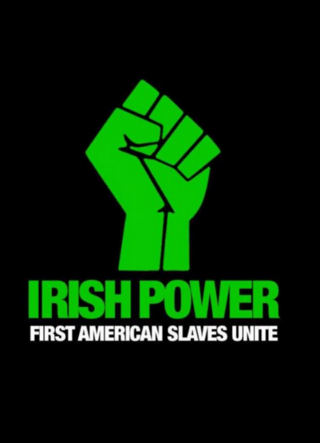
Comics is a medium used to express ideas with images, often combined with text or other visual information. It typically takes the form of a sequence of panels of images. Textual devices such as speech balloons, captions, and onomatopoeia can indicate dialogue, narration, sound effects, or other information. There is no consensus among theorists and historians on a definition of comics; some emphasize the combination of images and text, some sequentiality or other image relations, and others historical aspects such as mass reproduction or the use of recurring characters. Cartooning and other forms of illustration are the most common image-making means in comics; Photo comics is a form that uses photographic images. Common forms include comic strips, editorial and gag cartoons, and comic books. Since the late 20th century, bound volumes such as graphic novels, comic albums, and tankōbon have become increasingly common, along with webcomics as well as scientific/medical comics.

Slavery in the colonial history of the United States refers to the institution of slavery as it existed in the European colonies which eventually became part of the United States. In these colonies, slavery developed due to a combination of factors, primarily the labour demands for establishing and maintaining European colonies, which had resulted in the Atlantic slave trade. Slavery existed in every European colony in the Americas during the early modern period, and both Africans and indigenous peoples were victims of enslavement by European colonizers during the era.

Indentured servitude is a form of labor in which a person is contracted to work without salary for a specific number of years. The contract, called an "indenture", may be entered voluntarily ( )for purported eventual compensation or debt repayment, or imposed involuntarily as a judicial punishment. Many came with forged or no contract they ever saw.

Jules Ralph Feiffer is an American cartoonist and author, who at one time was considered the most widely read satirist in the country. He won the Pulitzer Prize in 1986 for editorial cartooning, and in 2004 he was inducted into the Comic Book Hall of Fame. He wrote the animated short Munro, which won an Academy Award for Best Animated Short Film in 1961. The Library of Congress has recognized his "remarkable legacy", from 1946 to the present, as a cartoonist, playwright, screenwriter, adult and children's book author, illustrator, and art instructor.

Harriet E. Wilson was an African-American novelist. She was the first African American to publish a novel in North America.

Peter Kuper is an American alternative comics artist and illustrator, best known for his autobiographical, political, and social observations.

Lynd Kendall Ward was an American artist and novelist, known for his series of wordless novels using wood engraving, and his illustrations for juvenile and adult books. His wordless novels have influenced the development of the graphic novel. Although strongly associated with his wood engravings, he also worked in watercolor, oil, brush and ink, lithography and mezzotint. Ward was a son of Methodist minister, political organizer and radical social activist Harry F. Ward, the first chairman of the American Civil Liberties Union on its founding in 1920.
Kerry G. Johnson is an African-American cartoonist, graphic designer, art director, caricaturist and children's book illustrator. He specializes in caricatures but has created cartoons, illustrations and news graphic work in his career in news and publication design.

Fashion illustration is the art of communicating fashion ideas in a visual form through the use of drawing tools or design-based software programs. It is mainly used by fashion designers to brainstorm their ideas on paper or digitally. Fashion illustration plays a major role in design - it enables designers to preview garment ideas before they are converted to patterns and physically manufactured.

Anthony Johnson was an Angolan-born man who achieved wealth in the early 17th-century Colony of Virginia. Held as an indentured servant in 1621, he earned his freedom after several years and was granted land by the colony.
Still I Rise: A Cartoon History of African Americans is a book co-authored by Roland Owen Laird Jr. and Taneshia Nash Laird. It is illustrated by Elihu Adolfo Bey. First published in September 1997, it was the first book to tell the vivid history of African Americans in a 200+ page cartoon narrative. Still I Rise covers the history of black people in America between the time periods of 1618, when the first skilled African craftspeople and farmers were brought over as indentured servants, to the Million Man March of 1995.
A motion comic is a form of animation combining elements of print comic books and animation. Individual panels are expanded into a full shot while sound effects, voice acting, and animation are added to the original artwork. Text boxes, speech bubbles and the onomatopoeia are typically removed to feature more of the original artwork being animated. Motion comics are often released as short serials covering a story arc of a long running series or animating a single release of a graphic novel. Single release issues of a story arc are converted into ten- to twenty-minute-long episodes depending on content.
Still I Rise may refer to:
Comics has developed specialized terminology. Several attempts have been made to formalize and define the terminology of comics by authors such as Will Eisner, Scott McCloud, R. C. Harvey and Dylan Horrocks. Much of the terminology in English is under dispute, so this page will list and describe the most common terms used in comics.
Indentured servitude in continental North America began in the Colony of Virginia in 1609. Initially created as means of funding voyages for European workers to the New World, the institution dwindled over time as the labor force was replaced with enslaved Africans. Servitude became a central institution in the economy and society of many parts of colonial British America. Abbot Emerson Smith, a leading historian of indentured servitude during the colonial period, estimated that between one-half and two-thirds of all white immigrants to the British colonies between the Puritan migration of the 1630s and the American Revolution came under indenture. For the colony of Virginia, specifically, more than two-thirds of all white immigrants arrived as indentured servants or transported convict bond servants.

Hillary Chute is an American literary scholar and an expert on comics and graphic narratives. She is Distinguished Professor of English and Art + Design at Northeastern University. She was formerly associate professor in the Department of English at the University of Chicago and an associate faculty member of the University’s Department of Visual Arts, as well as a visiting professor at Harvard University. She was a Junior Fellow at the Harvard Society of Fellows from 2007 to 2010.

Indentured servitude in British America was the prominent system of labor in the British American colonies until it was eventually supplanted by slavery. During its time, the system was so prominent that more than half of all immigrants to British colonies south of New England were white servants, and that nearly half of total white immigration to the Thirteen Colonies came under indenture. By the beginning of the American Revolutionary War in 1775, only 2 to 3 percent of the colonial labor force was composed of indentured servants.

Irish indentured servants were Irish people who became indentured servants in territories under the control of the British Empire, such as the British West Indies, British North America and later Australia.

The Irish slaves myth is a fringe pseudohistorical narrative that conflates the penal transportation and indentured servitude of Irish people during the 17th and 18th centuries, with the hereditary chattel slavery experienced by the forebears of the African diaspora. Some white nationalists, and others who want to minimize the effects of hereditary chattel slavery on Africans and their descendants, have used this false equivalence to deny racism against African Americans or claim that African Americans are too vocal in seeking justice for historical grievances. It also can hide the facts around Irish involvement in the transatlantic slave trade. The myth has been in circulation since at least the 1990s and has been disseminated in online memes and social media debates. According to historians Jerome S. Handler and Matthew C. Reilly, "it is misleading, if not erroneous, to apply the term 'slave' to Irish and other indentured servants in early Barbados". In 2016, academics and Irish historians wrote to condemn the myth.
Migration from India into Africa pre-dates European colonization. The number of Indians in Africa increased greatly with the settlement of Indians in Africa as indentured servants during colonization, and has continued to increase into the 21st century.












